The Diploma 3 in Aeronautical Communication is a specialized vocational program in the field of aviation that focuses on the provision of Aeronautical Communication Services, including the transmission of flight data and/or aviation information.
This study program holds an operational permit based on Decree No. 408/M/Kp/VII/2015, concerning the licensing of study programs in relation to the transformation of the Aviation Engineering and Safety Academy into Politeknik Penerbangan Surabaya, organized by the Human Resources Development Agency for Transportation, Ministry of Transportation of the Republic of Indonesia, dated July 7, 2015.
The program received accreditation from the National Accreditation Board for Higher Education (BAN-PT) as follows:
Decree No. 2429/SK/BAN-PT/Akred/Dipl-III/VII/2019, dated July 16, 2019, with a "B" (Good) accreditation rating.
Decree No. 5050/SK/BAN-PT/Ak.Ppj/D3/VII/2024, dated July 15, 2024, with a "B" (Good) accreditation rating, valid until July 17, 2029.
Study Program Accreditation
Vision and Mission of the Study Program
Vision
To become a leading study program in the field of aeronautical communication, producing professional, ethical, and disciplined graduates who contribute positively to society and the nation.
Mission
To provide education and training in the field of aviation, particularly in aeronautical communication, with a focus on competence and professionalism;
To conduct research and community service in order to develop and apply science and technology;
To establish partnerships with various institutions in support of the implementation of the Three Pillars of Higher Education (Tridharma Perguruan Tinggi);
To develop human resources who are cooperative, socially sensitive, and concerned about society and the environment.
Program Educational Objectives
To provide an active and conducive educational environment in aeronautical communication that aligns with established competencies and international standards.
To produce graduates who possess:
The ability to deliver Aeronautical Communication Services, including flight information, advisories, and warnings in uncontrolled airspace;
The competence to receive, process, and disseminate flight news and data in accordance with the service quality standards set by the International Civil Aviation Organization (ICAO);
Professional expertise, encompassing both technical and non-technical skills relevant to the profession, as evidenced by competency certifications;
Dedication and integrity, demonstrated by a strong commitment to quality, punctuality, and an understanding of ethical, social, and professional responsibilities;
The ability to master principles and techniques of effective oral and written communication;
A solid understanding of academic integrity, particularly regarding the types of plagiarism, the consequences of violations, and preventive measures.
Graduate Competency Certificate
Primary Competency Certificate
- Flight Information (FI)
- Aeronautical Fixed (AF)
- ICAO English Language Proficiecy (IELP)
Supplementary Competency Certificate
- Safety Management System (SMS)
- Human Factor (HF)
- TOEIC
Graduate Competency Profile
- Able to carry out duties as Aeronautical Fixed Service (AFS) personnel, responsible for managing fixed aeronautical communications in accordance with international standards and procedures.
- Operate fixed communication systems such as AFTN, AMHS, and CPDLC to support the smooth operation of air navigation services.
- Aeronautical Message Handling: Capable of composing, processing, and transmitting aeronautical messages such as NOTAM, Flight Plans (FPL), and other operational information.
- Ensure the accuracy, timeliness, and distribution of aeronautical information in accordance with the needs of both national and international users.
- Provide and/or supervise the provision of Air Traffic Advisory, Flight Information, and Alerting Services for aircraft operating within Aerodrome Flight Information Service (AFIS) units and heliports.
- Provide and/or supervise the provision of Air Traffic Advisory, Flight Information, and Alerting Services for aircraft conducting enroute flights outside controlled airspace, in accordance with the designated area of service—either using ATS Surveillance facilities for monitoring or via procedural methods where surveillance is not available.
- Master modern communication technologies to ensure the smooth operation of both fixed and mobile aviation communication services.
- Leverage automation systems and information technology-based software to effectively monitor, manage, and update flight data.
- Master national regulations (CASR) and international standards (ICAO) related to aeronautical communication services.
- Perform duties in compliance with applicable regulations, ensuring flight safety and efficiency.
- Able to identify potential risks within the aeronautical communication system and develop appropriate risk mitigation strategies.
- Respond effectively and promptly to emergencies or disruptions in the communication system to ensure service continuity.
- Possess professional communication skills in English in accordance with ICAO Level 4 proficiency or higher.
- Able to collaborate effectively with other air navigation service personnel to support safe and efficient flight operations.
- Able to make quick and accurate decisions in both operational situations and emergency conditions.
- Develop innovative solutions to enhance the efficiency and reliability of aeronautical communication services
- Able to serve as a regulator responsible for supervising and managing aeronautical communication services in accordance with applicable standards and regulations.
- Possesses the competence to serve as an instructor, delivering professional and technical courses in the field of aeronautical communication.
- Demonstrates a professional work ethic with strong commitment to safety, efficiency, and regulatory compliance.
- Capable of continuous learning and adaptation to technological advancements and regulatory changes in the field of Aeronautical Communication Services.
Career Opportunities
- Personel Aeronautical Communication Officer (ACO);
- Personel Radio Operator;
- Regulator or supervisor in the field of aeronautical communication services.
- Instructor at educational or training institutions specializing in aeronautical communication services.
- Consultant or auditor in the field of aeronautical communication services.
Laboratories
AFIS Manual Laboratory
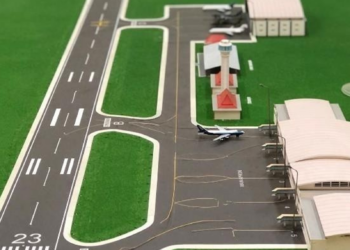
Description:
The simulator provides AFIS (Aerodrome Flight Information Service) training, which is a flight service at airports located in uncontrolled airspace. AFIS provides informational and alerting services for aircraft operating in these areas.
Language Laboratory
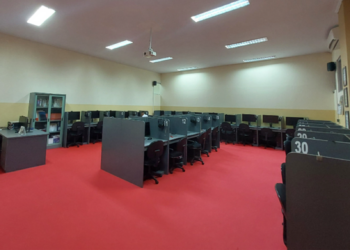
AMSC/AFTN Laboratory
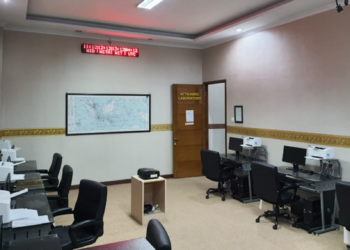
Description:
Automatic Message Switching Centre (AMSC) is a data communication or telex control system in a computer-based message distribution network that operates on a store-and-forward basis. This means that messages received by the AMSC are first stored and then forwarded to the intended address. The availability of this system supports air traffic safety to ensure that flights are conducted in a regular, efficient, and economical manner.
In addition, the AFTN (Aeronautical Fixed Telecommunication Network), supported by the AMSC, serves as a medium for the exchange of messages between meteorological offices (BMKG), Notice to Airmen (NOTAM), Rescue Coordination Centers (RCC), and, within certain limits, airline offices. It facilitates the transmission of flight data, weather reports, and other aviation-related information.
360 (ATC Simulator) Laboratory
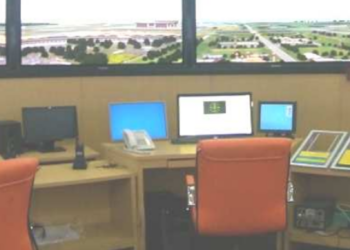
Description:
A 12-screen simulator arranged in a 360-degree circular configuration. This simulator can display various airport layouts used for tower control simulation exercises. In practice, the tower simulation aims to manage aircraft within the vicinity of the aerodrome. It is also equipped with an FPS holder, as well as screens displaying wind speed and direction information.
AMHS/ATN Laboratory

Description:
ATS Message Handling System (AMHS) is an international network system that forms part of air navigation services, enabling the exchange of messages between fixed aeronautical stations. Unlike previous systems, the information transmitted through AMHS is not limited to text; it also supports multimedia messages such as photos and videos. With improved network reliability, AMHS is capable of handling larger volumes of information and offers enhanced message security.
Curriculum
List of Lecturers Based on the PDPT
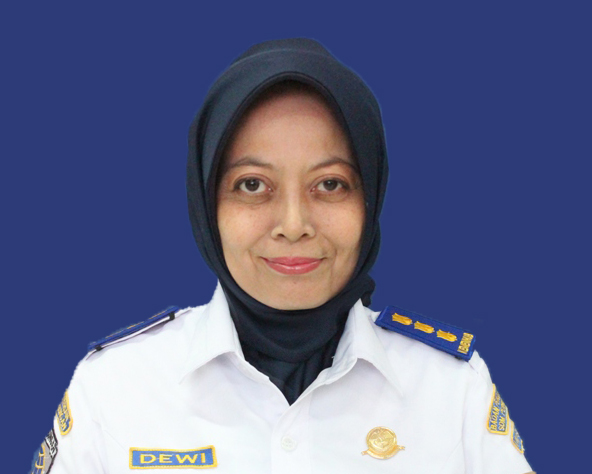
Lektor Kepala
NIP. 19690609 199303 2 002
Pembina Utama Muda (IV/c)
NIDN: 4209066901
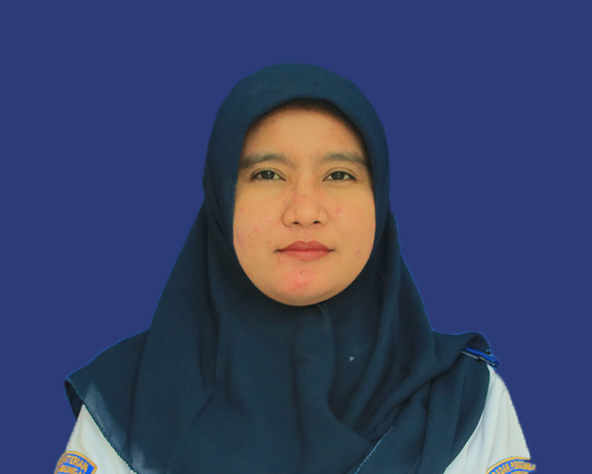
Lektor Kepala
NIP. 19810723 200502 2 001
Pembina (IV/a)
NIDN: 4223078101
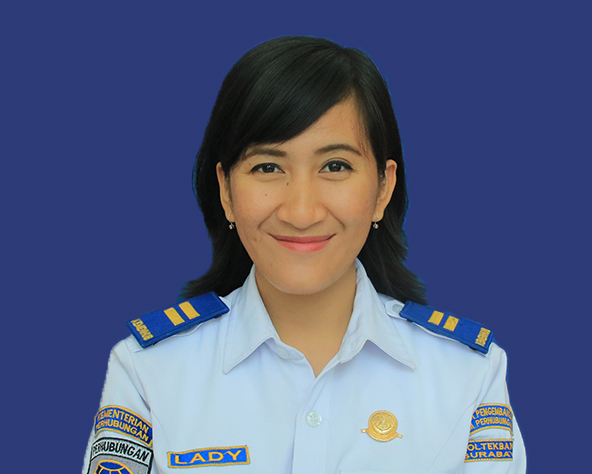
Lektor Kepala
NIP. 19871109 200912 2 002
Penata Tk.I (III/d)
NIDN: 4209118701
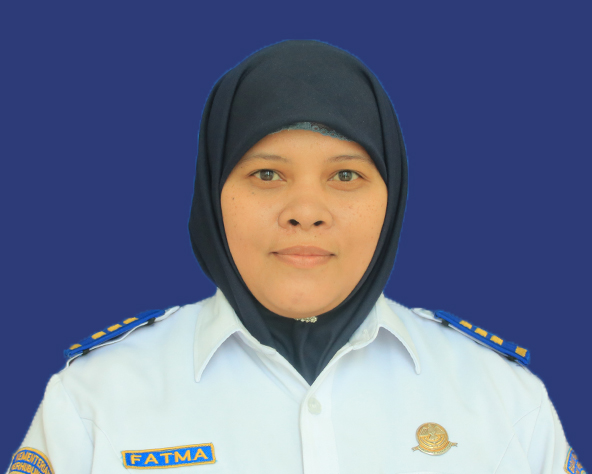
Lektor
NIP. 19801102 200502 2 002
Penata Tk. I (III/d)
NIDN: 4202118001
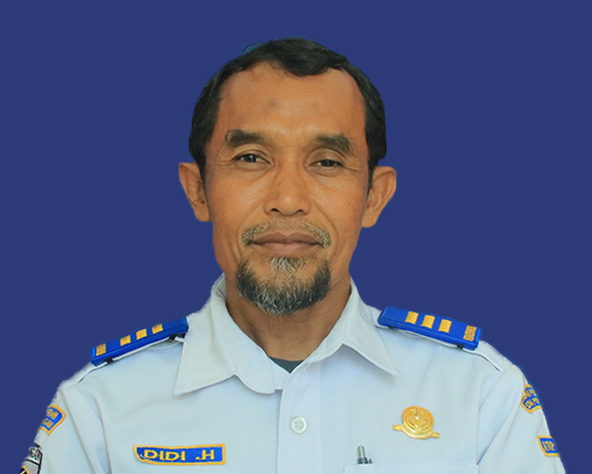
Lektor
NIP. 19650118 199003 1 001
Penata Tk. I (III/d)
NIDN : 4218016501

